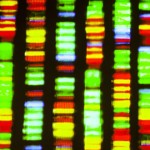The ACR recommendations suggest that there is a role for a trial of NSAIDs for up to two weeks if disease activity is relatively low and poor prognostic features are absent. Patients with high disease activity (such as symptomatic pericarditis) are recommended to receive systemic corticosteroids and if they prove unresponsive, anakinra is recommended. However, considering the available evidence and expert opinion, the recommendations do recognize that anakinra could be used as a first-line treatment for active systemic symptoms of sJIA, particularly if there is persistent fever and if poor prognostic features are present.
In view of the more recent data alluded to above, one might also consider tocilizumab as an alternative to IL-1 inhibitors. The ACR recommendations for children who have active arthritis but no systemic features include NSAIDS, followed by methotrexate. If there is no response to methotrexate, the recommendations suggest that patients should receive either anakinra or a tumor necrosis factor–α inhibitor. The potential role of IL-1 and IL-6 inhibitors for arthritis without systemic features remains to be clarified.
Back to the Case
The patient was treated with anakinra 100mg (2 mg/kg) daily by subcutaneous injection. There was a dramatic improvement in his clinical and laboratory features after less than one week of treatment. Similar improvements might be anticipated with the use of high-dose systemic corticosteroids or tocilizumab.
Although clinical trials have addressed the use of anakinra or tocilizumab in patients who have not responded adequately to systemic corticosteroids, there is increasing use of these agents in patients with active systemic features and arthritis, even prior to receiving corticosteroids. The role of these agents in corticosteroid-naive patients requires further study. The results of a proposed prospective study of the comparative effectiveness of these agents in early sJIA may help to elucidate the most appropriate use of each of these agents. In the interim, systemic corticosteroids still have an important role in treating acute severe manifestations of the disease and severe complications such as symptomatic pericarditis and in treating MAS.
Disclosure
Dr. Schneider is a consultant for Hoffmann-La Roche.
Dr. Schneider is associate chair (education) in the division of rheumatology and associate professor in the department of paediatrics and a rheumatologist in the division of rheumatology at the University of Toronto and The Hospital for Sick Children in Ontario, Canada. Dr. Laxer is a rheumatologist in the division of rheumatology at The Hospital for Sick Children and professor of paediatrics and medicine at the University of Toronto.
References
- Petty, RE, Southwood TR, Manners P, et al. International league of associations for rheumatology classification of juvenile idiopathic arthritis: Second revision, Edmonton 2001. J Rheumatol. 2004; 31:390-392.
- Grom AA, Mellins ED. Macrophage activation syndrome: Advances towards understanding pathogenesis. Curr Opin Rheumatol. 2010;22:561-566.
- Spiegel LR, Schneider R, Lang BA, et al. Early predictors of poor functional outcome in systemic-onset juvenile rheumatoid arthritis: A multicenter cohort study. Arthritis Rheum. 2000;43:2402-2409.
- Modesto C, Woo P, García-Consuegra J, Merino R, García-Granero M, Arnal C, Prieur AM. Systemic onset juvenile chronic arthritis, polyarticular pattern and hip involvement as markers for a bad prognosis. Clin Exp Rheumatol. 2001;19:211-217.
- Bechtold S, Ripperger P, Dalla Pozza R, Bonfig W, Häfner R, Michels H, Schwarz HP. Growth hormone increases final height in patients with juvenile idiopathic arthritis: Data from a randomized controlled study. J Clin Endocrinol Metab. 2007; 92:3013-3018.
- Al-Mutair A, Bahabri S, Al-Mayouf S, Al-Ashwal A. Efficacy of recombinant human growth hormone in children with juvenile rheumatoid arthritis and growth failure. J Pediatr Endocrinol Metab. 2000;13:899-905.
- Pascual V, Allantaz F, Arce E, Punaro M, Banchereau J. Role of interleukin-1 (IL-1) in the pathogenesis of systemic onset juvenile idiopathic arthritis and clinical response to IL-1 blockade. J Exp Med. 2005;201:1479-1486.
- Gattorno M, Piccini A, Lasigliè D, et al. The pattern of response to anti-interleukin-1 treatment distinguishes two subsets of patients with systemic-onset juvenile idiopathic arthritis. Arthritis Rheum. 2008;58:1505-1515.
- Quartier P, Allantaz F, Cimaz R, et al. A multicentre, randomised, double-blind, placebo-controlled trial with the interleukin-1 receptor antagonist anakinra in patients with systemic-onset juvenile idiopathic arthritis (ANAJIS trial). Ann Rheum Dis. 2011;70:747-754.
- De Jager W, Vastert SJ, Noordman BJ, Holzinger D, Kuis W, Prakken B, Wulffraat N. Anakinra restores the defective IL-18 NK cell axis in steroid naïve systemic onset JIA patients. Ann Rheum Dis. 2011;70(S3)89.
- Nigrovic PA, Mannion M, Prince FH, et al. Anakinra as first-line disease-modifying therapy in systemic juvenile idiopathic arthritis. Arthritis Rheum. 2011;63:545-555.
- Zeft A, Hollister R, LaFleur B, et al. Anakinra for systemic juvenile arthritis: The Rocky Mountain experience. J Clin Rheumatol. 2009;15:161-164.
- Lovell, DJ, Giannini EH, Kimura Y, et al. Long-term safety and efficacy of rilonacept in patients with systemic juvenile idiopathic arthritis (SJIA). Arthritis Rheum. 2009;60:S768.
- Ruperto N, Quartier P, Wulffraat N, et al. A phase II, multicenter, open-label study evaluating dosing and preliminary safety and efficacy of canakinumab in systemic juvenile idiopathic arthritis with active systemic features. Arthritis Rheum. 2012;64:557-567.
- de Benedetti F, Martini A. Targeting the interleukin-6 receptor: A new treatment for systemic juvenile idiopathic arthritis? Arthritis Rheum. 2005;52:687-693.
- Yokota S, Imagawa T, Mori M, et al. Efficacy and safety of tocilizumab in patients with systemic-onset juvenile idiopathic arthritis: A randomised, double-blind, placebo-controlled, withdrawal phase III trial. Lancet. 2008;22:998-1006.
- de Benedetti F, Brunner H, Ruperto N, et al. Efficacy and safety of tocilizumab in patients with systemic juvenile idiopathic arthritis: 2-Year data from a phase III trial. Arthritis Rheum. 2011;63:4047.
- Beukelman T, Patkar NM, Saag KG, et al. 2011 American College of Rheumatology recommendations for the treatment of juvenile idiopathic arthritis: Initiation and safety monitoring of therapeutic agents for the treatment of arthritis and systemic features. Arthritis Care Res (Hoboken). 2011; 63:465-482.

